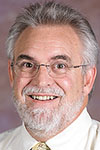Population psychics mandate city plans
Population counts are in the news.
When all the numbers are in, we’ll have one more snapshot for the never-ending discussion of what it all means. But let’s face it … the numbers are never all in.
The U.S. Census Bureau is mobilized for a stretch run to count all Americans in 2020. Results for every city, county and state will guide distribution of government funds, amend the apportionment of seats in Congress, and impact a great many social, cultural and political policies.
Our census doesn’t just count every living person in America; it seeks to classify, characterize and statisticize the entire population by age, gender, race, family makeup, residency and more. It is a crucial, far-reaching venture.
However, for McMinnville and other growing Oregon cities, estimates of future population may be more important than current counts. Certainly, more controversial.
Local officials say the state requires McMinnville to prepare housing and infrastructure for an annual growth rate more than twice the rate since 2010. Those projections say McMinnville's population will increase from 33,810 in 2018 to 46,276 in 2041, the equivalent of growing 1.373 percent every year. Then, with a reduction to 1.182 percent every year, the population in 2067 will be 62,804.
Exact annual growth rates can be tricky. For example, a city of 10,000 growing 1 percent every year will have 11,046 in 10 years – a total increase 10.46 percent, not 10 percent.
McMinnville’s growth rate since 2010 represents annual increases of 6.2 tenths of 1 percent – total population growth of just 5 percent in eight years. Some might argue that projections of such dramatic increases in that growth rate are an unfair burden on the community.
In fairness to the prognosticators, however, consider McMinnville's past growth rates:
One heyday of city growth was 1990 to 2000 at 4 percent annual growth. If that rate had continued, today’s city population would be 53,682.
From 2000 to 2010, the rate dropped to 1.96 percent annual growth – slower, but still 43 percent higher than the rate predicted from now through 2041.
That’s more numbers than I can shake a stick at. But as we know from the old saying, no stick can force liquid consumption by a horse you’ve led to water. For example, we’ve known every possible population detail about Baby Boomers for 70 years, but the country still failed to fully prepare.
Now, it’s McMinnville’s turn to prepare.













Comments
gregtompkins
These are the two cities Newberg and McMinnville are becoming:
Hillsboro - 39,403 (1990)
Beaverton - 54,954 (1990)